"The Arms Control Association’s work is an important resource to legislators and policymakers when contemplating a new policy direction or decision."
The United States must take the threat of nuclear confrontation out of the Taiwan equation.
September 2024
By Peter Burds
Chinese-U.S. nuclear tensions are approaching levels that have not been seen since the Cold War. Both countries’ miscalculated response stratagems are veering toward a “security paradox,” a downward spiral of self-perpetuating mutual hostility arising when myopic perceptions of antagonism and threat are read into a situation in which each party sought only defense and safety.1 This trend can be reversed only if China and the United States offset their reliance on strategic uncertainty by giving each other greater clarity regarding their intentions for modernizing their nuclear weapons arsenals and the conditions under which they would employ nuclear force.
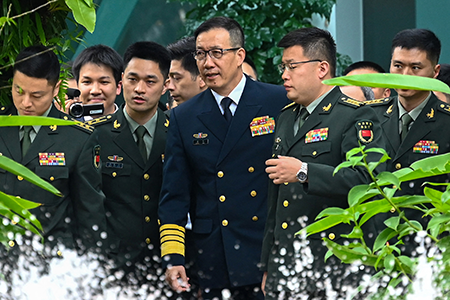
To begin, China must base the conditions of its modernization and proliferation on concrete standards rather than on “minimum deterrence,” its blurred and ever-changing finish line. Second, the United States, if unwilling to adopt a universal no-first-use policy, must make clear at a minimum that the scope of its ambiguous defense agreement with Taiwan would not include first use of nuclear force as a response to Beijing intervening militarily on the island.2 Finally, the United States must change its fatalist nuclear logic, which unnecessarily labels defensively oriented states as military competitors. It also must alter its aim from developing capabilities to win a nuclear war to reaching a level of mutual vulnerability as is the only way to maintain global nuclear stability. Bilateral military-to-military meetings should serve as forums for these discussions.
The U.S. Department of Defense has reported that as of May 2023, China had more than 500 operational nuclear warheads and is expected to double that number by 2030.3 As a result, the Congressional Commission on the Strategic Posture of the United States called for “fully and urgently” modernizing the U.S. nuclear force, with the aim of upgrading to capabilities that are able to facilitate “[increased] reliance on nuclear weapons to deter or counter” and “defeat” hypothetical joint Chinese-Russian aggressions if conventional methods proved unsuccessful.4
Although these reports correctly identify the trend, narratives framing China’s nuclear development as evidence that the country is “less interested in coexistence and more interested in dominance” fail to address how such hegemonic bids fit within the greater scheme of its nuclear and national security policies.5 The defensive, no-first-use posture that China has held steadily since nuclearizing in 1964 shows that, rather than power, Chinese national security is built on mutual vulnerability and second-strike assurance. This is underpinned by a “lean but effective” principle of maintaining the minimum nuclear level necessary for deterrence, made possible by spreading quantitative and geographical uncertainty regarding China’s nuclear stockpile.6 This uncertainty, facilitated in part by an extensive network of tunnels, heightens the survivability rate of China’s arsenal by making it impossible for an attacking state to be certain that a first strike would successfully disarm China’s retaliatory capabilities.7
Uncertainty, therefore, is crucial to enabling China to maintain a comparably small nuclear stockpile, at a ratio of approximately 1:7 compared to the United States in 2024; keep its nuclear weapons on lowered day-to-day alert levels, thus lowering the risk of accidental launch,8 and lower the chance that nuclear force will be used against China in a preemptive attack. At the same time, the ever-changing and ambiguous standard determining China’s minimum level of deterrence stands out as problematic because it leaves states with no ability to forecast when this bar will be met and for how long. All that this phrase conveys is a rhetorical image of the arsenal’s effect, not any quantifiable truth.
As a result, China is able to change its subjective understanding of what minimum deterrence means numerically in light of any new, unexpected security dilemmas that may arise without having to change the rhetoric used publicly to discuss its nuclear stance. Such ambiguity is dangerous because the ability to predict future trends is essential for other parties to know how to respond proportionally to the security dilemma posed by China’s expanding arsenal.
Nonetheless, China always has made its no-first-use, retaliation-based nuclear policy explicitly clear. Leaders in Beijing see that this is the way through which bilateral confidence and stability are nurtured, by choosing doctrinal transparency over numerical transparency.9 The United States, on the other hand, leaves details regarding the circumstances under which it would employ nuclear weapons highly ambiguous, for example, “to protect U.S. vital interests.”10 Yet, Washington simultaneously makes clear that it reserves the right to use nuclear weapons first. The result is a dangerous information gap that sets the stage for the tensions faced today.
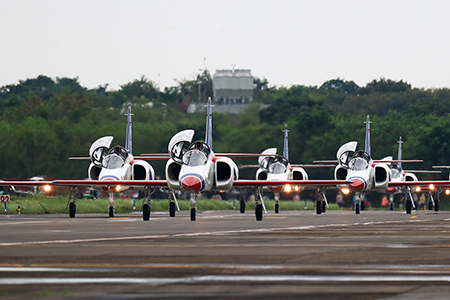
U.S. doctrinal uncertainty becomes especially relevant when considering the question of whether nuclear force falls within the scope of the ambiguous U.S. defense agreement with Taiwan.11 The strategic ambiguity that Washington pursues regarding its “One China” policy with Beijing must not bleed over to the context of nuclear use in the event of Beijing’s military intervention on the island. Up to this point, the unpredictability of what the U.S. reaction would be in this circumstance very likely has been a factor in preventing its occurrence.12 Yet, if China continues to modernize at its current rate, the risk of its successful retaliation following U.S. first use of nuclear weapons would be unacceptably high enough to cancel out such nuclear resort as a viable strategic option from the outset.
Furthermore, global and regional stability cannot be maintained through nuclear coercion. The United States must take the threat of nuclear confrontation out of the Taiwan equation by clarifying that it will not resort to first use of nuclear weapons in the island’s defense. This will open up paths for reaching a lasting solution through peaceful diplomatic means by removing the most volatile catalyst for nuclear competition and conflict in contemporary Chinese-U.S. relations. A Taiwan-specific no-first-use agreement would alleviate the worries of Washington’s East Asian allies by keeping the threat of nuclear escalation out of their backyards.13 Likewise, the specificity of this agreement would skirt issues impeding U.S. adoption of a universal no-first-use policy by allowing the United States to continue providing nuclear protection to these allies.
U.S. nuclear policy indicates that the country’s international relations are driven, as a general rule, by a fatalist logic, or what in lay terms could be called fear. In this paradigm, a country assumes that competition and conflict never can be escaped; hence, there is always an expectant fear of being attacked and of attacking. This mentality is evidenced further by the U.S. Department of State’s 2018 designation of China and Russia as long-term strategic competitors who want “to shape a world consistent with their authoritarian model.”14 Consequently, the U.S. approach to China’s nuclear modernization during the 2027 to 2035 threat environment is based around military preparedness rather than diplomacy and assumes a “worst is possible” security policy that makes it “impossible for defensively motivated states to communicate effectively to others their defence-only intentions.”15
This mindset is partly why the United States has difficulty accepting the nuclear stability paradigm of mutual vulnerability and instead pursues a nuclear arsenal able to “defeat” even joint Chinese-Russian attacks. As long as this policy is maintained, global nuclear polarity will suffer a dangerous imbalance that makes the possibility of unilateral nuclear use ever more likely. Mutual vulnerability is the reason that ballistic missile defense and Terminal High Altitude Area Defense systems deployed or upgraded by the United States in recent years have caused such controversy in Chinese-U.S. relations. Although the intentions behind and capabilities of these systems are up for debate, they could pose a serious threat to retaliation-oriented no-first-use states such as China by rendering the United States overly protected from reprisal if it were the first one to use nuclear force. China’s initial transition to multiple independently targetable reentry vehicle technology may have been a response to U.S. ballistic missile defense upsetting this polarity.16
Up to now, China and the United States have responded to growing tensions by taking steps to increase their own security, addressing nuclear modernization with nuclear modernization. Countermeasures have led to higher insecurity for the other side, stimulated similar countermeasures, and left the two parties with less security in the end.17 Despite this serious escalation, the two countries have not discussed nuclear arms control directly in any bilateral military meeting that has occurred since Chinese President Xi Jinping and U.S. President Joe Biden directed a resumption of these during their November 2023 summit.18 It is imperative that the two countries hold open-minded, detailed nuclear arms control discussions and swiftly put in place radical measures to reach a lasting solution that steers away from the grim security paradox now confronting them.
ENDNOTES
1. Ken Booth and Nicholas J. Wheeler, “Uncertainty,” in Security Studies: An Introduction, 3rd ed., ed. Paul D. Williams and Matt McDonald (New York: Routledge, 2018), p. 133.
2. U.S. first use of nuclear weapons involving conflict in Taiwan has been a serious source of Chinese concern. See Henrik Stålhane Hiim, M. Taylor Fravel, and Magnus Langset Trøan, “The Dynamics of an Entangled Security Dilemma,” International Security, Vol. 47, No. 4 (2023): 158-159.
3. U.S. Department of Defense, “Military and Security Developments Involving the People’s Republic of China, 2023: Annual Report to Congress,” n.d., p. viii, https://media.defense.gov/2023/Oct/19/2003323409/-1/-1/1/2023-MILITARY-AND-SECURITY-DEVELOPMENTS-INVOLVING-THE-PEOPLES-REPUBLIC-OF-CHINA.PDF.
4. Congressional Commission on the Strategic Posture of the United States, “America’s Strategic Posture,” October 2023, p. viii, https://www.ida.org//media/feature/publications/a/am/americas-strategic-posture/strategic-posture-commission-report.ashx.
5. “Biden’s New China Doctrine,” The Economist, July 17, 2021, https://www.economist.com/leaders/2021/07/17/bidens-new-china-doctrine.
6. Sun Xiangli, “The Development of Nuclear Weapons in China,” in Understanding Chinese Nuclear Thinking, ed. Tong Zhao and Li Bin (Washington: Carnegie Endowment for International Peace, 2016), p. 96.
7. 战略学 [The Science of Military Strategy] (军事科学出版社 [Beijing: Military Science Publishing House], 2013), p. 172.
8. Transition to a launch-on-warning system has not been confirmed, and the official status of China’s nuclear weapons remains offline. Gregory Kulacki and Robert Rust, “Xi Jinping’s Thoughts on China’s Nuclear Weapons,” Union of Concerned Scientists, April 1, 2024, https://blog.ucsusa.org/gregory-kulacki/xi-jinpings-thoughts-on-chinas-nuclear-weapons/.
9. Tong Zhao, “China’s Role in Reshaping the Global Nuclear Non-Proliferation Regime,” St Anthony’s International Review, Vol. 6, No. 2 (January 2011): 73.
10. Congressional Commission on the Strategic Posture of the United States, “America’s Strategic Posture,” p. 25.
11. Taiwan Relations Act, Pub. L. No. 96-8, 22 U.S.C. § 3301(b).
12. Richard Bush, “The United States Security Partnership With Taiwan,” Brookings Institute, n.d., https://www.brookings.edu/wpcontent/uploads/2016/11/fp_20160713_taiwan_alliance.pdf.
13. Tong Zhao, “It’s Time to Talk About No First Use,” Foreign Policy, November 6, 2023, https://foreignpolicy.com/2023/11/06/united-states-china-nuclear-meeting-no-first-use-arms-control/.
14. U.S. Department of Defense, “Summary of the 2018 National Defense Strategy of the United States of America,” n.d., p. 2, https://dod.defense.gov/Portals/1/Documents/pubs/2018-National-Defense-Strategy-Summary.pdf.
15. Booth and Wheeler, “Uncertainty,” p. 137.
16. Hans M. Kristensen and Robert S. Norris, “Chinese Nuclear Forces, 2016,” Bulletin of the Atomic Scientists, Vol. 72, No. 4 (2016): 207.
17. Oliver Kessler and Christopher Daase, “From Insecurity to Uncertainty: Risk and
the Paradox of Security Politics,” Alternatives, Vol. 33, No. 2 (2008): 215.
18. Three meetings occurred between December 2023 and May 2024.
Peter Burds is pursuing his master’s degree at the Johns Hopkins University-Nanjing University Center for Chinese and American Studies in Nanjing, China.
The United States has lived with its nuclear ICBMs on hair trigger for 50 years. It should end that posture before it runs out of luck.
September 2024
By Frank N. von Hippel
During the 1950s, 1960s, and 1970s, the technological nuclear arms race between the United States and the Soviet Union was fast, furious, and frightening.
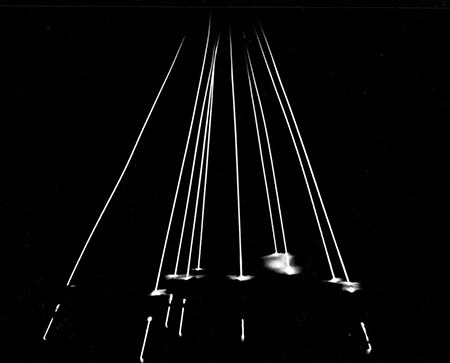
The United States realized it was in a competition when it detected the first Soviet nuclear test in 1949, sooner than almost all predictions. That test triggered a race for the much more powerful thermonuclear bombs that were tested by both countries a half-decade later.
For nuclear delivery vehicles, the United States focused initially on transitioning from the World War II propeller-driven bomber to a jet-powered long-range version. The Soviet Union focused more on intercontinental ballistic missiles (ICBMs), building on the V-2 ballistic missile technology developed by Nazi Germany during World War II.
The U.S. ICBM program was launched 70 years ago, on August 5, 1954, when the U.S. Air Force top secret Western Development Division started work on the goal of delivering a fully operational weapon system to the Strategic Air Command within six years. U.S. ICBMs were initially liquid fueled but later solid fueled, enabling low maintenance and constant launch readiness. A decade after Sputnik’s flight, the United States had 1,000 solid-fueled Minuteman ICBMs sheltered in underground silos in the Great Plains, plus 656 shorter-range submarine-launched ballistic missiles (SLBMs), also solid fueled, on 41 ballistic missile submarines.1
Simultaneously, both countries began to develop ballistic missile defense systems. They then deployed multiple warheads on their ballistic missiles to assure that they could overwhelm any large-scale defenses. Despite the fact that the Soviet Union and the United States agreed in 1972 to limit themselves to 100 interceptor missiles each, by the end of the Cold War, they each had deployed about 10,000 offensive strategic ballistic missile warheads.
Today, Russia and the United States have reduced their arsenals to about 1,500 deployed strategic ballistic missile warheads each, still enough to destroy civilization many times over. Yet, in July, the Senate Armed Services Committee added to its version of the annual National Defense Authorization Act a requirement for an “assessment of [an] updated force sizing requirement” and for the Pentagon to submit to Congress “a strategy that enables the United States to concurrently...achieve the nuclear employment objectives of the President against any adversary that conducts a strategic attack against the United States or its allies [and] hold[s] at risk all classes of adversary targets [in China, Iran, North Korea, and Russia] described in the nuclear weapons employment guidance issued by the President.”2
The ‘Window of Vulnerability’
The short flight times of strategic ballistic missiles—30 minutes for ICBMs and half that for SLBMs—have long inspired nightmares about the possibility of Pearl Harbor-type surprise attacks. Albert Wohlstetter’s 1958 article, “The Delicate Balance of Terror,” published the year after Sputnik’s flight, provoked a large amount of literature on this subject.3
During the 1970s, the possibility that Soviet ICBMs could become accurate enough (within about 1,000 feet)4 to destroy missile silos hardened to survive a blast overpressure of 2,000 pounds per square inch became one of the founding issues for the Committee on the Present Danger, which was established in 1976 by a group of leading U.S. nuclear hawks. The committee did not accept the intelligence community’s assessment of the accuracy of Soviet ICBMs and pressed the Ford administration for an independent review by committee experts. President Gerald Ford’s Foreign Intelligence Advisory Board supported the proposal, and the CIA agreed to allow a “Team B” assessment of its intelligence. That assessment erred in the direction of worst-case estimates of Soviet missile accuracy, resulting in subsequent CIA estimates being similarly skewed.5 Committee members filled top security posts in the Reagan administration and pushed for a buildup of similar capabilities.
Later, it was learned from the archive of Vitalii Kataev, the top nuclear expert in the Soviet Central Committee, that Soviet ICBMs still had not achieved an accuracy sufficient to realize the feared “window of vulnerability” for U.S. ICBM silos as of 1991, when the Soviet Union disintegrated.6 U.S. ballistic missile accuracy, however, improved more rapidly. With deployment of the 10-warhead MX ICBM and eight-warhead Trident II SLBM in 1986 and 1990, respectively, the United States created a window of vulnerability for Soviet/Russian and Chinese silo-based ICBMs.7 Those countries responded by deploying significant fractions of their ICBMs on mobile launchers.
The Pentagon also decided on mobile basing for 200 MX ICBMs on massive transporters that would shuttle the missiles between 5,000 missile shelters on 8,000 miles of special heavy-duty roads in a manner designed to make it impossible for the Soviets to determine which shelters contained the missiles.8 This proposal was rejected by candidate base states Nevada and Utah. With the Cold War winding down, the Pentagon simply deployed 50 MX missiles in Minuteman silos and adopted on an “interim” basis a “launch under attack” posture for all of its silo-based ICBMs, which is still in effect 50 years later.
Launch Under Attack
The primary advantage of a launch-under-attack posture is its low cost. Its major disadvantage is the danger of accidental launch. In 1979, National Security Advisor Zbigniew Brzezinski’s military assistant argued that U.S. early-warning systems were “just not good enough to let us know that our ICBMs are under attack” and that a launch-on-warning posture would be futile in any case because U.S. ICBMs would be targeted on “empty Soviet silos.” He pressed Brzezinski to call on Secretary of Defense Harold Brown “to withdraw the [launch-under-attack] option.”9
Nevertheless, today, the launch-under-attack posture remains for Minuteman III ICBMs and for their proposed silo-based successors, the Sentinel ICBMs, which are planned for deployment starting around 2030.
Despite the “dual phenomenology” requirement that indications of a possible missile attack detected by satellites be confirmed by early-warning radars, command-and-control expert Bruce Blair reported that,
in the two scariest episodes [of false warning], early[-]warning crews cancelled the alarms after eight minutes...a delay over the requisite three minutes designated in the launch-on-warning protocol that was deemed so egregious that it got them fired on the spot….
[C]yber warfare is compounding these risks. Cyber penetration of early[-]warning networks could corrupt the data on which a presidential launch decision would depend…. [T]he requirement for bug-free nuclear command, control and communication is officially waived in order to provide the president with prompt launch options.10
As frightening as the possibility of an accidental launch is the scenario for an end-of-civilization spasm that the Pentagon’s launch-under-attack posture sets up. In a 1998 interview, General George Lee Butler, the first commander of Strategic Command (1992-1994), warned that Strategic Command had become obsessed by its requirement for
exact destruction of 80 percent of the adversary’s nuclear forces, [and when] they realized that they could not in fact assure those levels of damage if the president chose to ride out an attack…[t]hey built a construct that powerfully biased the president’s decision process toward launch before the arrival of the first enemy warhead…. The consequences of deterrence built on a massive arsenal made up of a triad of forces now simply ensured that neither nation would survive the ensuing holocaust.11
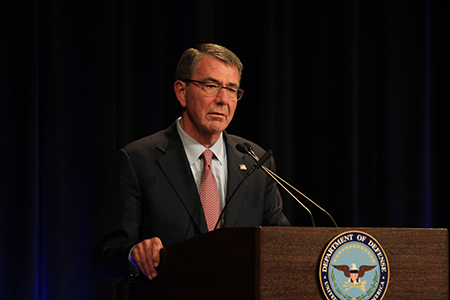
U.S. presidents since Ronald Reagan have been terrified by the possibility of being put into the position of having to make a launch-on-warning decision within a few minutes on the basis of uncertain information.12 In 1994, Ashton Carter, assistant secretary of defense for nuclear security, asked that the team working on the Clinton administration’s Nuclear Posture Review consider the elimination of land-based ICBMs. This triggered a revolt in the Joint Staff and a letter of protest that was leaked to the Senate Armed Services Committee. Carter was dressed down by a group of generals and abandoned his effort to change the U.S. strategic posture.13
Carter never returned to the issue, even after he became defense secretary in the Obama administration. Some two decades later, however, William Perry, a defense secretary in the Clinton administration, became a leading advocate of eliminating silo-based ICBMs, which he described as “some of the most dangerous weapons in the world [because they could] trigger an accidental nuclear war.”14
President Barack Obama tried and failed to end the launch-on-warning protocol. Yet, his administration’s 2010 Nuclear Posture Review resulted in a decision to reduce from three to one the number of warheads deployed on each Minuteman III ballistic missile in order to “enhance the stability of the nuclear balance by reducing the incentives for either side to strike first.”15 The logic was that, with the reduced loading, it would require on average more than one attacking warhead to destroy each U.S. ICBM warhead. This also would better position a U.S. president to resist pressure to launch on warning. Unfortunately, the Senate Armed Services Committee is pressing the Pentagon today for a “plan for decreasing the time to upload additional warheads” to the ICBM fleet.16
The Biden administration’s 2022 Nuclear Posture Review stated reassuringly that “while the United States maintains the capability to launch nuclear forces under conditions of an ongoing nuclear attack, it does not rely on launch-under-attack policy to ensure a credible response.”17 This would appear to allow the elimination of silo-based ICBMs. It also would allow a leader such as President Joe Biden, who is familiar with the nuclear debate, to resist the pressure that Butler described for a launch-on-warning posture, but not less knowledgeable presidents.
Weak Protections Against False Warnings
Strategic Command’s insistence on having the option of launching ICBMs before they can be destroyed has been compounded by its concerns about the vulnerability of its nuclear command-and-control system. Therefore, it has built redundancy into the number of ways in which the ICBMs can be launched. Each ICBM can be launched by any of five underground launch-control bunkers or an airborne control post communicating through multiple ground and radio communication links (fig. 1).18

In contrast to this redundancy of positive controls to assure the ICBMs would be launched if ordered, there is not a single system to deal with the possibility of a mistaken or unauthorized launch.
When Minuteman III ICBMs are test-launched with dummy warheads into the Pacific Ocean from Vandenburg Air Force Base on the California coast, they are equipped with command-destruct devices in case a missile veers off course during its powered flight. Each stage of the booster has a linear-shaped charge attached to its side that can be detonated on command to split the stage open so that it loses power and falls into the sea.19
In contrast, ICBMs loaded with nuclear warheads are not equipped with command-destruct devices. They have been excluded because the destruct code might leak and be used by an enemy, even though the probability of that happening could be reduced to an infinitesimal level.20
The ICBM launch-on-warning posture and the lack of a command-destruct system make clear that the Pentagon’s priority is to make sure that nothing can prevent U.S. nuclear missiles from launching. The priority should be that they will not launch until after the determination that a nuclear attack has occurred and a thorough assessment has been made of how the United States should best respond in a way that minimizes the probability of an escalation to nuclear Armageddon.
U.S. silo-based ICBMs are not well matched to that priority, but other legs of the triad could be. U.S. ballistic missile submarines at sea are survivable. In a crisis, bombers could be kept on strip alert so that they could be launched on warning to assure their survival because, unlike ballistic missiles, they can be recalled.21
The United States has lived with its nuclear ICBMs on hair trigger for 50 years. It should end that posture before it runs out of luck.
ENDNOTES
1. U.S. National Park Service, “History of Minuteman Missile Sites,” n.d., https://npshistory.com/publications/mimi/srs/history.htm (accessed August 26, 2024); Robert S. Norris and Thomas B. Cochran, “US-USSR/Russian Strategic Offensive Nuclear Forces: 1945-1996,” Natural Resources Defense Council, January 1997, https://nuke.fas.org/norris/nuc_01009701a_181.pdf.
2. National Defense Authorization Act for Fiscal Year 2025, S. 4638, 118th Cong. (2024), sec. 1514 (hereinafter 2025 NDAA).
3. Albert Wohlstetter, “The Delicate Balance of Terror,” Rand Corp., n.d., https://www.rand.org/pubs/papers/P1472.html.
4. Samuel Glasstone and Philip J. Dolan, “The Effects of Nuclear Weapons,” 3rd ed., U.S. Departments of Defense and Energy, 1977, pp. 110-111
5. Anne H. Cahn, Killing Detente: The Right Attacks the CIA (University Park, PA: Pennsylvania State University Press, 1998).
6. Pavel Podvig, “The Window of Vulnerability That Wasn’t,” International Security, Vol. 33,
No. 1 (2008): 118-138.
7. Donald MacKenzie, Inventing Accuracy (Cambridge, MA: MIT Press, 1990), app. A.
8. Office of Technology Assessment, “MX Missile Basing,” 1981, pp. 60, 65.
9. William E. Odom to Zbigniew Brzezinski, memorandum, October 8, 1979, https://nsarchive.gwu.edu/document/19357-national-security-archive-doc-30-william-e-odom.
10. Bruce G. Blair, “Loose Cannons: The President and U.S. Nuclear Posture,” Bulletin of the Atomic Scientists, January 1, 2020, https://thebulletin.org/premium/2020-01/loose-cannons-the-president-and-us-nuclear-posture/.
11. Jonathan Schell, The Gift of Time (New York: Henry Holt, 1998), p. 194.
13. Janne E. Nolan, An Elusive Consensus: Nuclear Weapons and American Security After the Cold War (Washington, DC: Brookings Institution Press, 1999), ch. 3.
14. William J. Perry, “Why It’s Safe to Scrap America’s ICBMs,” The New York Times, September 30, 2016.
15. U.S. Department of Defense, “Nuclear Posture Review Report,” April 2010, p. 23, https://dod.defense.gov/Portals/1/features/defenseReviews/NPR/2010_Nuclear_Posture_Review_Report.pdf.
17. U.S. Department of Defense, “2022 Nuclear Posture Review,” October 27, 2022,
p. 15, https://media.defense.gov/2022/Oct/27/2003103845/-1/-1/1/2022-NATIONAL-DEFENSE-STRATEGY-NPR-MDR.PDF#page=51.
18. The Military Standard, “Minuteman Communications Network,” n.d., http://www.themilitarystandard.com/missile/minuteman/communications.php (accessed August 26, 2024).
19. U.S. Department of Defense, “Missile Work,” n.d., https://www.defense.gov/Multimedia/Photos/igphoto/2002067554/ (accessed August 26, 2024); Naval Surface Weapons Center, “Space Shuttle Range Safety Command Destruct System Analysis and Verification: Phase 1 - Destruct System Analysis and Verification,” NSWC/TR 80-417, March 1981, https://apps.dtic.mil/sti/pdfs/ADA103453.pdf.
20. Sherman Frankel, “Aborting Unauthorized Launches of Nuclear-Armed Ballistic Missiles Through Post-Launch Destruction,” Science & Global Security, Vol. 2 (1990), pp. 1-20.
21. See, e.g., Global Zero U.S. Nuclear Policy Commission, “Modernizing U.S. Nuclear Strategy, Force Structure and Posture,” Global Zero, May 2012, https://www.globalzero.org/wp-content/uploads/2018/09/gz_us_nuclear_policy_commission_report.pdf.
Frank N. von Hippel is a professor of public and international affairs emeritus at Princeton University.
An Author Responds to a Review of His Book
September 2024
By Aaron Bateman
Author of Weapons in Space: Technology, Politics, and the Rise and Fall of the Strategic Defense Initiative
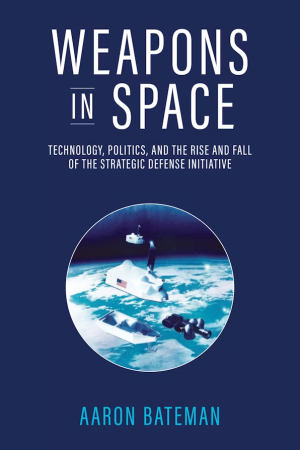
The review of Weapons in Space in the July/August issue of Arms Control Today does not address the core arguments of my book. Weapons in Space is an academic history that situates the Strategic Defense Initiative (SDI) within a broader transformation in the military uses of space that began in the 1970s. The book is also the first academic history of space arms control in the late Cold War and explains why space arms control failed, in stark contrast to nuclear arms control at that time. Moreover, the book uncovers the political and technological reasons why U.S. allies participated in SDI, thereby illuminating the international dimensions of controversy surrounding military space activities in this period. Critically, it explains the origins and evolution of SDI, but does not defend SDI.
A central argument of the book is that SDI emerged from intensifying military space competition in the 1970s. As détente crumbled in that decade, the Soviet Union and the United States were developing anti-satellite (ASAT) weapons designed to attack space systems. Both countries sought the ability to destroy satellites that were increasingly important for military applications, such as enabling precision strikes against adversary forces. Nevertheless, there were concerns about the implications of ASAT weapons systems for stability and conflict escalation. In the late 1970s, Moscow and Washington entered into ASAT weapons arms control negotiations that ultimately were unsuccessful. These developments did not make SDI inevitable, but they are key parts of its origin story.
Histories of Ronald Reagan’s presidency frequently cite nuclear abolitionism as a core reason why he pursued SDI. In contrast, the book shines a spotlight on the place of SDI within Reagan’s broader space policy. Reagan had concluded that Moscow was waging a campaign for space superiority, and he sought to expand U.S. military power in space. Yet, he also believed that SDI was a mechanism for eliminating nuclear weapons, a view not shared by Reagan’s advisers. Reconciling Reagan’s rhetoric of SDI as a tool of peace with the reality that SDI technologies could be used offensively was no easy task for his administration.
Weapons in Space further reveals how U.S. allies shaped SDI. Many were skeptical that SDI technologies were feasible and worried that the program would lead to a space arms race. Although many allies and partners became involved in SDI research, several of them continued to oppose deployment of space-based defenses. Analyzing the role of allies in SDI underscores that the expanding militarization of space in this period was an international phenomenon that transcended the bipolar superpower competition.
The consequences of the linkage between SDI and ASAT weapons technologies are especially important from an arms control perspective. As the book shows, due to this relationship, Reagan would not accept any constraints on U.S. freedom of action in space. Despite his public commitment to field ASAT weapons systems, the book reveals that he was willing to trade them away until his advisers explained that doing so would constrain the eventual deployment of missile defense interceptors in space.
In the end, space-based missile defense was not deployed for technological and political reasons. The book details the multiple failures of space-based interceptor tests in 1990 and 1991 that undermined the cause of SDI promoters. Even more importantly, improving U.S.-Soviet relations and progress in nuclear arms control called into question the arguments in favor of continued investment in space-based defenses. Consequently, Congress tightened the purse strings, and President Bill Clinton eliminated space-based interceptors. In this context, momentum for space arms control also waned.
In a counterfactual world, it is unlikely that a space arms control treaty, including limits on SDI, would have prevented the complex space security challenges in the post-Cold War era. Yet, such an agreement would have provided a valuable precedent for current international efforts to reduce risks in space.
The Biden administration says it is looking for Tehran’s new leadership to demonstrate first that it intends to take a different approach to negotiations.
September 2024
By Kelsey Davenport
Iran’s new president expressed support for nuclear diplomacy, but the Biden administration says it is looking for the new leadership in Tehran to take action to demonstrate that it intends to take a different approach to negotiations.
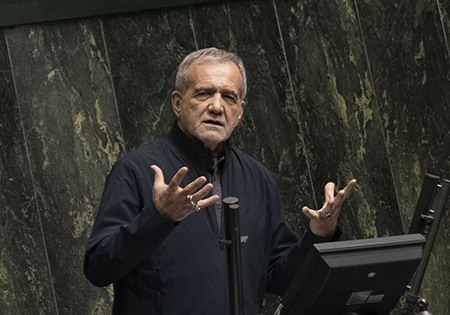
After taking office on July 30, Iranian President Masoud Pezeshkian expressed support for constructive engagement and said he would work to “remove the oppressive sanctions” targeting the country. He named Abbas Araghchi, one of Iran’s negotiators on the 2015 nuclear deal, as foreign minister.
Pezeshkian has denied that Iran has any interest in developing nuclear weapons, despite recent comments from senior officials suggesting Tehran will change its nuclear doctrine if the security environment changes or its nuclear facilities are attacked. (See ACT, May 2024.)
In a Tehran Times op-ed on July 12, Pezeshkian wrote that “Iran’s defense doctrine does not include nuclear weapons” and called for the United States to “adjust its policy.” He warned that Iran “does not and will not respond to pressure.”
U.S. State Department spokesperson Verdant Patel said in a July 29 press briefing that the United States still views diplomacy as the “best way to achieve an effective, sustainable solution with regards to Iran’s nuclear program” but “we are far away from anything like that.” The United States will judge Iran’s new leaders “by their actions, not their words,” he said.
Patel suggested that if Pezeshkian wants to “show seriousness or a new approach,” Iran could take some immediate actions, such as cooperating with the International Atomic Energy Agency (IAEA), rather than escalating tensions over various long-standing issues.
In June the IAEA Board of Governors censured Iran for failing to cooperate with a years-long investigation into past, undeclared nuclear activities. The IAEA is also pressing Iran to expand agency monitoring of the nuclear program. (See ACT, July/August 2024.)
Monitoring is particularly important because Iran is expanding its uranium-enrichment capacity and can produce weapons-grade nuclear material more quickly.
In response to the June censure, Iran informed the IAEA of plans to install additional cascades of advanced centrifuges at its enrichment facilities. The IAEA confirmed on June 28 that Iran installed four of the eight cascades planned for the Fordow Fuel Enrichment Plant.
In addition to the uranium-enrichment capacity expansion, an annual U.S. intelligence assessment for Congress of Iran’s proliferation risk released in July noted that Iran has “undertaken activities that better position it to produce a nuclear device.” The report did not offer details on those activities, but U.S. officials told The Wall Street Journal that Iran does not have “an active military nuclear program.”
In addition to Iran’s nuclear advances, regional tensions and Iran’s deepening relationship with Russia continue to complicate the prospects for renewed nuclear diplomacy.
Iran threatened to retaliate against Israel after Ismael Haniyeh, a senior Hamas official, was assassinated in Tehran on July 31 during a trip for Pezeshkian’s inauguration. Iranian officials said the response will be severe unless there is a ceasefire agreement for Gaza.
After Pezeshkian took office, Sergei Shoigu, the secretary of Russia’s security council, traveled to Tehran to meet with military leaders and the new president.
Following his visit, the United States expressed concern that Iran may be preparing to transfer ballistic missiles to Russia. Patel said the United States is prepared to deliver a “swift and severe response” if Iran provides Russia with missiles.
Russia says it will adopt “mirror measures” in response to the German-U.S. announcement.
September 2024
By Xiaodon Liang
The United States will deploy conventionally armed ground-launched intermediate-range missiles in Germany on a rotational basis beginning in 2026, the two countries announced July 10 on the sidelines of a NATO summit in Washington.
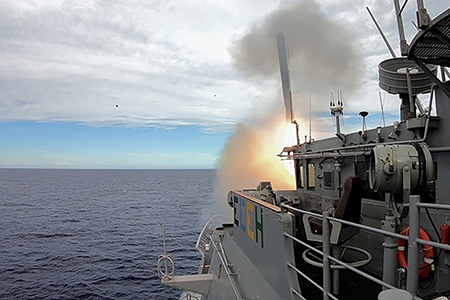
U.S. Army forces in Germany will field the multipurpose Standard Missile-6 (SM-6), the Tomahawk land-attack cruise missile, and a hypersonic missile that is still in development in “episodic deployments…as part of planning for enduring stationing of these capabilities in the future,” the joint announcement said. These weapons will equip the army’s Multi-Domain Task Force based at Wiesbaden, Germany, which the army first activated in September 2021.
Russia will adopt “mirror measures” in response to the German-U.S. announcement, Russian President Vladimir Putin said July 28, the Associated Press reported. If the deployments go forward, Russians will consider themselves “free” from a unilateral moratorium on the deployment of intermediate-range missiles, he said. Prior to the German-U.S. announcement, Deputy Foreign Minister Sergei Ryabkov confirmed in a June 27 interview with Izvestia that Moscow also is revising its nuclear declaratory policy.
The Tomahawk Block IV cruise missile has a reported range of more than 1,600 kilometers, while the hypersonic missile, known as the Long-Range Hypersonic Weapon (LRHW), will have a range of at least 3,000 kilometers. Both previously would have been prohibited under the Intermediate-Range Nuclear Forces (INF) Treaty, which barred the production and deployment of ground-launched missiles having a range between 500 and 5,500 kilometers. The Trump administration withdrew the United States from that treaty in August 2019, and Russia reciprocated by suspending its participation.
After the U.S. withdrawal, Russia proposed a joint moratorium on the deployment of missiles with these ranges and indicated it would be willing to halt deployment of the 9M729 cruise missile, which had been the focus of U.S. allegations about treaty violations. In talks prior to the full-scale Russian invasion of Ukraine in February 2022, Russia proposed agreements with NATO and the United States that would bar deployments inside and outside national territories that allowed this category of missiles to reach the territories of other parties to the agreements. (See ACT, January/February 2022.)
The U.S. Army first introduced the idea of a multidomain task force in a March 2021 concept paper. Under those plans, each task force would contain a Strategic Fires Battalion with three sets of capabilities: a short-range ballistic missile battery, a midrange capability battery, and a long-range hypersonic battery. The United States deployed a midrange battery, fielding the SM-6 and Tomahawk missiles, to a foreign country for the first time earlier this year when a unit participated in exercises in the Philippines. (See ACT, May 2024.)
The Army completed the first successful end-to-end flight test of the LRHW system in May after a series of cancellations and setbacks in 2023. (See ACT, November 2023.) The Government Accountability Office said in a July report that officials believe it will take the Army roughly 11 months to field an LRHW battery after an initial successful test.
The LRHW and Tomahawk weapons systems are not the only intermediate-range missiles that will soon equip NATO forces in Europe. France, Germany, Italy, and Poland signed a letter of intent July 11 at the NATO summit on development of a new ground-launched cruise missile with a range of more than 500 kilometers, Reuters reported. French Defense Minister Sebastien Lecornu said other countries are welcome to join the acquisition initiative.
The German-U.S. announcement did not include a new public arms control proposal to Russia, but on July 25, Mallory Stewart, U.S. assistant secretary for arms control, deterrence, and stability, said that the United States has been “explaining to [the Russians] why having some type of limitation on arms racing in this particular context is in their interest as well as ours.”
The reaction in Germany exposed rifts in the governing coalition. Foreign Minister Annalena Baerbock of the Green party welcomed the forthcoming deployment in a July 21 interview with the Funke Media Group, noting that Putin had “broken with disarmament treaties and our common European peace architecture” years ago. Her comments came in response to the parliamentary leader of the Social Democratic Party (SPD), Rolf Mützenich, who expressed concerns about the destabilizing effects of short missile flight times to the same news group.
But the SPD party presidium on Aug. 12 backed Chancellor Olaf Scholz and Defense Minister Boris Pistorius in endorsing the deployment decision, according to the German news agency dpa. The endorsement resolution emphasized that “nuclear armament of the systems is not envisaged,” dpa reported.
Separate surveys conducted by the opinion research firms Forsa and Civey indicate deep divisions in German society on the deployment.
On July 19, Vipin Narang, the acting U.S. assistant secretary of defense for space policy, told a Washington think tank that NATO has made less prominent adjustments to its nuclear forces that were not highlighted at the NATO summit. These include an ongoing “raising and refreshing [of] the nuclear IQ” with a focus on developing expertise in nuclear planning.
Narang said the alliance is integrating the B61-12 nuclear gravity bomb and the F-35 combat aircraft as the new combination of systems for delivery of forward-deployed U.S. nuclear weapons. He added there are no plans to change where nuclear weapons are stored in Europe.
The $360 million deal would be the first U.S. sale of attack drones to the self-governing island.
September 2024
By Michael T. Klare
The United States has approved its inaugural sale to Taiwan of unmanned aerial vehicles (UAVs) and attack drones. The transaction, announced by the U.S. Defense Security Cooperation Agency on June 18, is worth an estimated $360 million.
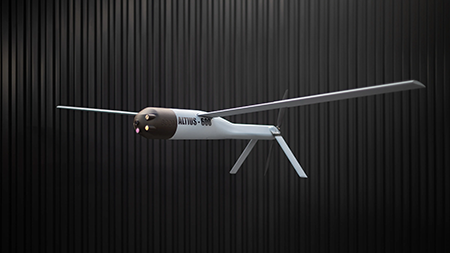
Previous U.S. sales to the self-governing island largely have involved major crewed platforms such as F-16 fighters and M-1 Abrams tanks, but the drone sale involves small, man-portable devices employing artificial intelligence and other advanced technologies to locate and attack enemy targets with minimal human oversight.
“Until now, we have no real loitering munition for the army to use. So after about nine months, the U.S. government decided to sell these to Taiwan,” Chen Kuo-ming, a Taipei-based defense analyst, told Defense News.
The Defense Security Cooperation Agency notified Congress of the new arms package on June 18. Because no objection was raised within 30 days, negotiations are proceeding on its final provisions. Although the numbers could change, the package is slated to include the Switchblade 300 loitering munition and the ALTIUS 600M-V multipurpose UAV. Armed drones of this sort largely are intended for use by ground combat forces against an opponent’s armored vehicles, artillery pieces, and command posts located beyond line of sight.
The Switchblade 300, made by AeroVironment, can carry an explosive payload of 3.7 pounds and has a flight range of 30 kilometers and a loiter time of 20 minutes. It is described as a “kamikaze” drone because it is intended to seek out enemy armored vehicles or other enemy assets and crash into them, detonating its payload on impact. The plan is for Taiwan to receive 720 Switchblade missiles plus 101 SB 300 fire-control systems, for a total of $60 million.
The ALTIUS 600M-V UAV, made by Anduril Industries, can be used as a loitering munition as well as a reconnaissance drone or communications relay. It is equipped with electro-optic/infrared cameras for target acquisition and possesses greater range (440 kilometers) and flight endurance (up to four hours) than the Switchblade.
According to Anduril, the ALTIUS 600M-V “has demonstrated autonomous coordinated strike, target recognition, and collaborative teaming,” allowing a single operator to control multiple drones. The proposed sale to Taiwan incorporates up to 291 ALTIUS missiles plus their launch systems and transport trailers, worth a combined $300 million.
The sale of such devices reflects a growing Pentagon consensus that Taiwan could not match China’s military on a one-to-one basis in conventional military platforms, such as tanks, destroyers, and jet fighters. Instead, Taiwan must adopt an asymmetric strategy, using drones and other unconventional weapons to inflict heavy losses if Chinese forces attempt to invade and occupy the island. By providing the Taiwanese with plentiful short-range defensive weapons such as the Switchblade and ALTIUS, U.S. officials hope China will think twice before undertaking an invasion or, if the Chinese military does invade, the assault will be slowed long enough to allow U.S. and other friendly forces to come to the island’s rescue.
The same philosophy undergirds the Pentagon’s Replicator strategy, intended to speed the delivery of small unmanned weapons to U.S. forces in the Indo-Pacific region. “Replicator is meant to help us overcome [China’s] biggest advantage, which is mass. More ships. More missiles. More people,” Deputy Secretary of Defense Kathleen Hicks said when announcing the program in August 2023.
By arming U.S. forces with “multiple thousands” of autonomous weapons systems, she said, “[w]e’ll counter the [Chinese military’s] mass with mass of our own, but ours will be harder to plan for, harder to hit, harder to beat.”
On May 6, Hicks announced that Switchblade drones would be part of the first tranche of munitions to be procured under the Replicator program. “U.S.-supplied Switchblade drones have already demonstrated their utility in Ukraine, and this system will provide additional capability to U.S. forces,” the Pentagon said in a statement.
When viewed together, the decision to supply armed drones to Taiwan and to U.S. forces in the Indo-Pacific region can be seen as part of a larger U.S. strategy for countering China in a future war over Taiwan, a scenario that many Pentagon leaders believe is increasingly likely.
China wants “to offer the world a short, sharp war so that it is a fait accompli before the world can get their act together,” Adm. Samuel Paparo, commander of the U.S. Indo-Pacific Command, told The Washington Post on June 10 in reference to a possible Chinese invasion of Taiwan.
To prevent such an invasion from succeeding, the Pentagon plans to deploy thousands of unmanned ships, planes, and submarines in the region before larger, crewed platforms can arrive in strength.
“I want to turn the Taiwan Strait into an unmanned hellscape using a number of classified capabilities,” Paparo said. That way, “I can make their lives utterly miserable for a month, which buys me the time for the rest of everything.”
The United States will continue building a new Sentinel intercontinental ballistic missile (ICBM) force despite escalating cost overruns.
September 2024
By Xiaodon Liang
The United States will continue building a new intercontinental ballistic missile (ICBM) force despite escalating cost overruns, according to the Pentagon.
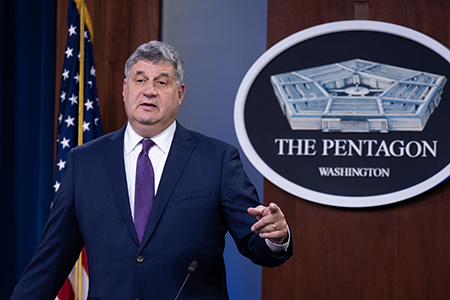
The acquisition program for the Sentinel ICBM, which involves the design and purchase of 659 missiles and the refurbishment and construction of support infrastructure, is now projected to cost $141 billion in 2020 dollars. That figure is 81 percent more than estimated when the Pentagon granted Milestone B approval in September 2020, at which point the program was authorized to enter the engineering and manufacturing development phase.
The decision to continue the program and the new cost estimate were announced in a July 8 press briefing by William LaPlante, the undersecretary of defense for acquisition and sustainment, after the Pentagon completed a statutorily mandated review triggered by cost projection increases first disclosed to Congress in January. (See ACT, March 2024.) The Defense Department has not released a public report on the six-month review.
The estimate does not take into account the W87-1 nuclear warhead for the ICBM, which the National Nuclear Security Administration believes will cost $15.9 billion.
LaPlante led the review process required by the Nunn-McCurdy Act, which contains fiscal discipline measures that are triggered when the cost increases of a major acquisition program cross certain thresholds. A breach is triggered by a 15 percent unit cost increase over the baseline, while a critical breach requires a rise of 25 percent over the baseline. In December, before the in-depth review, the Air Force found that running cost estimates indicated that the Sentinel program was in critical breach of the law.
The Pentagon has not released an updated estimate of the cost in current and future dollars, but application of the same adjustment as the one used in the last declassified Selected Acquisition Report on the Sentinel program from December 2023 would suggest an inflation-adjusted cost of $202 billion.
“I am deeply disappointed by the decision to continue this wasteful and unnecessary endeavor,” Rep. John Garamendi (D-Calif.) said in a July 9 press release. A leading congressional critic of the Sentinel program, Garamendi expressed regret that the review did not address “whether it is necessary to maintain the land-based leg of the nuclear triad at its current levels” and called on the Defense Department and the White House to revisit this question.
LaPlante certified that the ICBM program was essential to national security and that there are no alternatives. Under the Nunn-McCurdy Act, these certifications are required to continue a program that is in critical breach of cost thresholds. LaPlante confirmed during the July 8 briefing he had rescinded the program’s Milestone B approval and announced that he had requested that the Air Force develop a plan for restructuring the program. These steps are also mandated by the act.
LaPlante said the Pentagon’s Cost Assessment and Program Evaluation office had led a study of “four or five” alternatives to the Sentinel program, including extension of the service life of the existing Minuteman III ICBM until 2070, a road-mobile basing mode, and “hybrid options.” All major alternatives were rejected because they did not meet requirements or were more costly than the current plan.
Vipin Narang, the acting assistant secretary of defense for space policy, confirmed on July 19 that the review also considered adapting the Trident D5 submarine-launched ballistic missile for a ground-based role. He said that option was rejected because it did not produce any significant cost savings while creating a common point of failure across the sea- and land-based legs of the nuclear triad.
In March, Garamendi and Sen. Elizabeth Warren (D-Mass.) sent a letter to Kristyn Jones, acting undersecretary of the Air Force, urging her to ensure that the Nunn-McCurdy review would price out alternative plans to extend the service life of the Minuteman III to 2030, 2040, or 2050.
Although the Pentagon did not consider these options, the Air Force opted to reduce the complexity of ICBM launch facilities as a result of the review with the hope of saving time and money, LaPlante said. Without any adjustments, the expected cost of the original Sentinel plan had increased to $160 billion in 2020 dollars, 106 percent over the Milestone B baseline.
The program is now “several” years behind schedule, according to LaPlante. The Pentagon previously anticipated a two-year delay past the May 2029 target for initial deployment. (See ACT, May 2023.)
Officials blamed rising cost estimates on an immature understanding of the scope of work needed for the ground segment of the program when Milestone B approval was granted. Andrew Hunter, an Air Force senior acquisition executive, said at the July 8 press briefing that the ground segment, which includes not only launch facilities but also silos and communications infrastructure, accounted for “the vast majority” of the cost increase. Speaking July 20 in the United Kingdom, Hunter said, “I think there are elements of the ground infrastructure where there may be opportunities for competition,” Breaking Defense reported.
Northrop Grumman has been the lead contractor for the Sentinel program since September 2020, while Bechtel is the primary construction subcontractor.
North Korea deployed launchers for nuclear-capable missiles along its southern border after South Korea and the United States announced new guidelines for strengthening U.S. extended nuclear deterrence.
September 2024
By Kelsey Davenport
North Korea deployed launchers for nuclear-capable missiles along its southern border after South Korea and the United States announced new guidelines for strengthening U.S. extended nuclear deterrence.
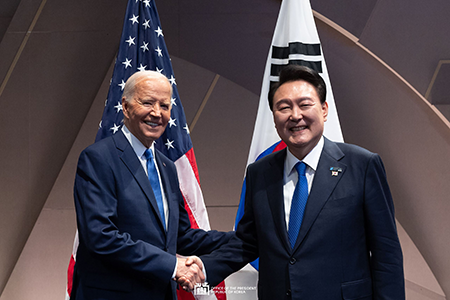
South Korean President Yoon Suk Yeol and U.S. President Joe Biden announced the new guidelines for responding to North Korean threats during a July 11 meeting in Washington. The joint statement described the guidelines document as providing a “solid foundation” for enhancing South Korean-U.S. cooperation on extended nuclear deterrence.
The guidelines were crafted by the Nuclear Consultative Group, a body Biden and Yoon established in 2023 to increase South Korean participation in U.S. extended nuclear deterrence decision-making. (See ACT, May 2023.)
Although the presidents did not go into detail about the nature of the guidelines, a U.S. Defense Department press release on July 11 said the document will “provide principles and procedures to assist alliance policy and military authorities in maintaining effective nuclear deterrence policy and posture.”
Yoon said that, as a result of the guidelines and the work of the consultative group, U.S. nuclear assets will be “specifically assigned” to Korean peninsula missions. He described the move as an upgrade to the alliance.
Vipin Narang, the acting U.S. assistant secretary of defense for space policy and co-chair of the consultative group, said on July 16 that the guidelines will allow the group to “evolve with the threat environment.”
Narang, speaking to VOA Korean Service, said that South Korea and the United States approach extended deterrence as “equal partners,” but reiterated that only the U.S. president will be able to authorize the use of nuclear weapons.
In their statement, Biden and Yoon also called for the consultative group to make further progress on several issues, including South Korean conventional support for U.S. nuclear operations “through conventional-nuclear integration” and “nuclear consultation processes in crises and contingencies.”
North Korea’s state-run Korean Central News Agency (KCNA) on July 13 described the announcement as a demonstration of South Korean and U.S. “sinister intentions to step up preparation for a nuclear war” with North Korea. Its statement said that Seoul and Washington are driving Pyongyang to “further improve its nuclear deterrent readiness and add important elements” to its nuclear arsenal.
Several weeks later, North Korea announced the deployment of the 250 missile launchers to military units stationed near the border with South Korea.
In an Aug. 4 speech marking the delivery, North Korean leader Kim Jong Un described the systems as “new-type tactical ballistic missile launchers” for the military’s “new core offensive weapon.” He said that North Korea is “attaining [its] first-stage goal of building missile forces in the first line units on the front” with South Korea.
Images from the event suggest that the launchers are designed for the Hwasong-11D, a short-range ballistic missile that North Korea says is nuclear capable. Each launcher can carry four missiles. Independent assessments of North Korea’s nuclear arsenal suggest that the country has assembled an estimated 50 warheads.
Kim blamed U.S. military activity for North Korea’s decision to deploy the launchers. He said that as the “U.S.-led alliance” evolves into a “nuclear-based military block, the military security environment surrounding” North Korea is changing drastically and that Pyongyang cannot “rest content with its current level of war deterrent.” He said that South Korea has “grown reckless enough” to want to share U.S. nuclear weapons.
North Korea later accused the United States and South Korea of using joint military exercises as “preparation for a war.” An Aug. 18 commentary in KCNA rejected the U.S. description of the annual exercises as “defensive” and described the drills as “offensive and provocative.”
South Korea and the United States announced previously that the annual August drills, called Ulchi Freedom, would not include responding to a North Korean nuclear attack. But South Korea announced separate plans to hold its own nuclear response training during the joint exercise.
The South Korean unilateral exercises also included responding to “gray zone provocations,” such as the trash-filled balloons that North Korea sends over the border and false information spread by “anti-state forces” within South Korea, and defending infrastructure from attacks, Yoon said in an Aug. 19 speech.
Yoon raised similar concerns about divisive propaganda during an Aug. 15 speech laying out South Korea’s new strategy for unification with North Korea.
Yoon reaffirmed South Korea’s commitment to “peaceful unification based on freedom and democracy,” even though North Korea abandoned the goal of unification last year. (See ACT, January/February 2024.)
To achieve unification, Yoon said South Korea must pursue “three key undertakings” of building the capabilities to pursue “freedom-based unification,” fostering a “strong desire for unification” among the North Korean people, and acting in solidarity with the international community.
China said it rejected the U.S. offer for more nuclear arms control talks and tied the decision to U.S. arms sales to Taiwan.
September 2024
By Xiaodon Liang
China confirmed that it has rejected the U.S. offer for more nuclear arms control talks as a follow-on to a dialogue held Nov. 6. (See ACT, June 2024; December 2023).
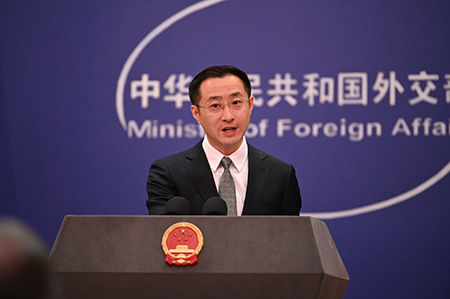
At a July 17 press conference, Lin Jian, a Chinese Foreign Ministry spokesperson, criticized the U.S. decision to continue selling arms to Taiwan. “Consequently, the Chinese side has decided to hold off discussion with the [United States] on a new round of consultations on arms control and nonproliferation,” he said.
Lin said that China “stands ready to maintain communications” on international arms control but only if the United States respects China’s “core interests and create[s] necessary conditions for dialogue and exchange.”
In response, U.S. State Department spokesperson Matthew Miller said on July 17 that the Chinese decision to entangle nuclear arms control talks with U.S. arms sales to Taiwan “undermines strategic stability” and “increases the risk of arms race dynamics.” He added that the United States remains open to “developing and implementing concrete risk-reduction measures.”
Since the meeting last November, the United States has announced the approval of several foreign military sales packages for Taiwan. Approvals of these packages do not always result in arms contracts or arms deliveries.
In December 2023 and February 2024, the U.S. Defense Security Cooperation Agency announced that the State Department had approved the transfer of two bundles of various military electronics and related support services to Taiwan worth $300 million and $75 million, respectively. Contracts for these items will be tendered by the United States.
On June 5, the agency announced the potential sale of $300 million in F-16 spare and repair parts for Taiwan’s air force, to be taken out of U.S. Air Force stock. On June 18, the agency announced the approval of a transfer to Taiwan of $360 million in loitering munitions and unmanned aerial vehicles.
These transfers are administered by the U.S. government. The Taiwanese government negotiates commercial arms purchases directly from U.S.-based contractors, but data on approval of these transfers are published by the State Department on an annual basis only.
In April, Congress approved and President Joe Biden signed into law a supplemental foreign military aid package that included an appropriation of $2 billion in foreign military financing for Taiwan. This sum, which may be used for loans and loan guarantees, supplements a $300 million fund created as part of regular fiscal year 2024 State Department appropriations.
Congress authorized military financing for Taiwan in the fiscal year 2023 defense authorization act, but did not appropriate funds in the same budget cycle.
Last August, the Biden administration notified Congress that it would offer $80 million in military financing support for an arms transfer to Taiwan for the first time, Reuters reported. The program normally is used for sovereign states.
The head of the International Atomic Energy Agency visited the nuclear power plant in the Kursk region of Russia as threats to the facility grew because of the Russian war against Ukraine.
September 2024
By Garrett Welch
The head of the International Atomic Energy Agency (IAEA) visited the nuclear power plant in the Kursk region of Russia as threats to the facility grew because of the Russian war against Ukraine.
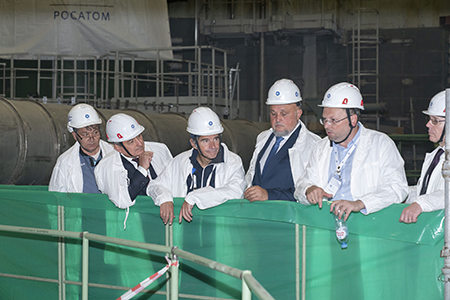
IAEA Director-General Rafael Mariano Grossi told a news conference after the Aug. 27 site visit that the plant was extremely fragile because it had no protective dome. “The danger or possibility of a nuclear accident has emerged near here,” he said according to Reuters.
Grossi said the plant was still operating very close to normal, but this meant the security situation was even more serious, the news agency reported.
Russia has accused Ukrainian forces, which recently launched a ground assault into the Kursk region, of repeated attacks on the plant. Reuters reported on Aug. 27 that Ukraine has not responded to the allegations.
The IAEA has said it was informed by Russia on Aug. 22 that the remains of a drone had been found within the plant. The same day, Russian President Vladimir Putin accused Ukraine of trying to strike the Kursk facility in an overnight attack.
Tensions rose in recent weeks after Ukrainian forces launched a ground assault and pushed into Russian territory for the first time since the full-scale Russian invasion of Ukraine began in 2022. As of Aug. 27, Kyiv claimed to control roughly 1,263 square kilometers of Russian territory in the Kursk region and advanced to within 40 kilometers of the plant.
The nuclear facility contains six reactors, of which two are fully operational, two are shut down, and two are under construction. According to photos obtained by the BBC, Russian forces appear to be constructing defenses and digging trenches near the facility. Russia has since accused Ukraine of planning to attack the facility and blame it on Russia, which Ukraine denied as “insane” propaganda.
For months, Grossi also has warned about potential damage to the Zaporizhzhia Nuclear Power Plant in Ukraine, which Russia occupied early in the war and has been attacked by drones. “These reckless attacks (against both plants) endanger nuclear safety at the plant and increase the risk of a nuclear accident. They must stop now,” Grossi said in an Aug. 11 statement.
The IAEA team on-site at Zaporizhzhia reported that a fire broke out at one of the facility’s cooling towers on Aug. 11. The agency statement said the team “witnessed thick dark smoke coming from the northwestern area of the plant.” The team also reported hearing an explosion, and the Russian operators at the facility reported that “a drone had allegedly struck one of the plant’s two cooling towers.”
The fire has been contained, but Zaporizhzhia personnel suggested that the cooling tower may need to be dismantled. The IAEA statement confirmed that there was no immediate impact on nuclear safety.
Ukrainian President Volodymyr Zelenskyy on Aug. 12 blamed Russian forces for starting the fire in an attempt at “nuclear blackmail,” while Zaporizhzhia’s Kremlin-installed governor blamed Ukrainian shelling.
The IAEA inspected photos of the cooling tower and did not report any visible foreign objects among the debris. Grossi said the evidence gathered suggests that the fire did not start at the base of the cooling tower.
Russia previously accused Ukraine of conducting drone strikes on June 19 and 21 that cut power to residents of Enerhodar, near the Zaporizhzhia plant, which the IAEA condemned as “unacceptable.” (See ACT, July/August 2024.) The IAEA, in an Aug. 17 statement, confirmed that a drone strike hit a road around the plant’s protected area that day.
In an Aug. 9 statement, Grossi called on both parties “to exercise maximum restraint in order to avoid a nuclear accident.” He reiterated that “any military action taken against the plant represents a clear violation of the five concrete principles for protecting the facility,” established by the UN Security Council in 2023. These five principles seek to ensure nuclear safety and security, including prohibitions on an attack of “any kind from or against the plant, in particular targeting the reactors, spent fuel storage, other critical infrastructure, or personnel.”
Prior to the latest round of escalations, the UN General Assembly adopted a resolution demanding that Russia immediately return full control of the Zaporizhzhia plant to Ukraine.
